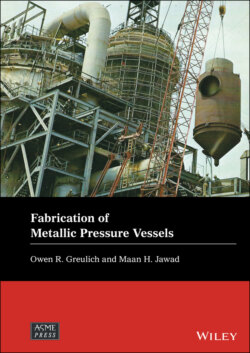Читать книгу Fabrication of Metallic Pressure Vessels - Maan H. Jawad - Страница 16
1.3.1 Types of costs
ОглавлениеFor a business, one way of dividing costs is to separate them into either capital or operating costs. Capital costs are the one‐time expenses such as purchase of land, construction of a plant, and major equipment purchases that are expected to last a long time. A small hand grinder, for example, would not be considered a capital cost, while the costs of constructing a building or purchasing a large forge would be. Operating costs are the other costs of being in business, including wages and salaries, real estate expenses (rent, taxes, etc.), materials, furniture, consumables, maintenance, etc.
This way of looking at expenses is useful in understanding what things cost overall, and it might be enough for a company with a single product line. For calculating and controlling costs of production of individual products in a job shop, it is usually easiest to work with burdened labor rates that represent the hourly cost of performing an operation, plus material and other direct costs of a particular job, plus capital costs. The burdened labor cost includes such items as direct wages, cost of vacations and holidays, social security and other tax cost, sick leave, and pension or 401k plans.
Some companies use a single rate for essentially all personnel whose time is charged to a job, while others charge a rate that varies by function or even by the individual assigned to the job. Sometimes costs are broken down further to identify and charge for specific assets outside of the burdened labor rate. This is most likely to occur in a case in which an asset of particularly high value is used only on some jobs. In such a case, dividing its cost among all jobs would subsidize those jobs that require this equipment at the expense of those that don’t. The result would be extremely competitive prices on the jobs requiring this equipment, but a lack of competitiveness on those that don’t need it.
Companies arrive at burdened labor and equipment rates in different ways, but the intent is to allocate costs in a way that allows bidding jobs, recovering costs, and making a reasonable profit. Because the fabrication environment is competitive, it is important to understand enough about the individual cost elements that (1) wise trade‐offs between design approaches can be made to ensure competitiveness, and (2) accurate total cost of a particular fabrication can be identified for pricing purposes and to ensure a reasonable profit.
